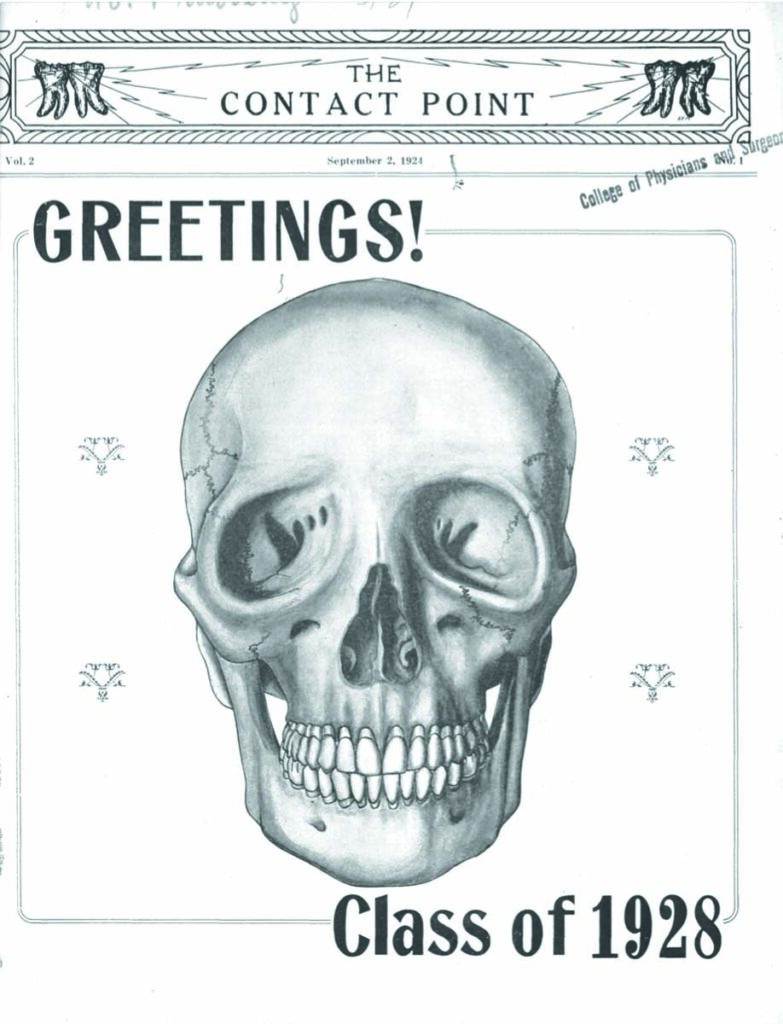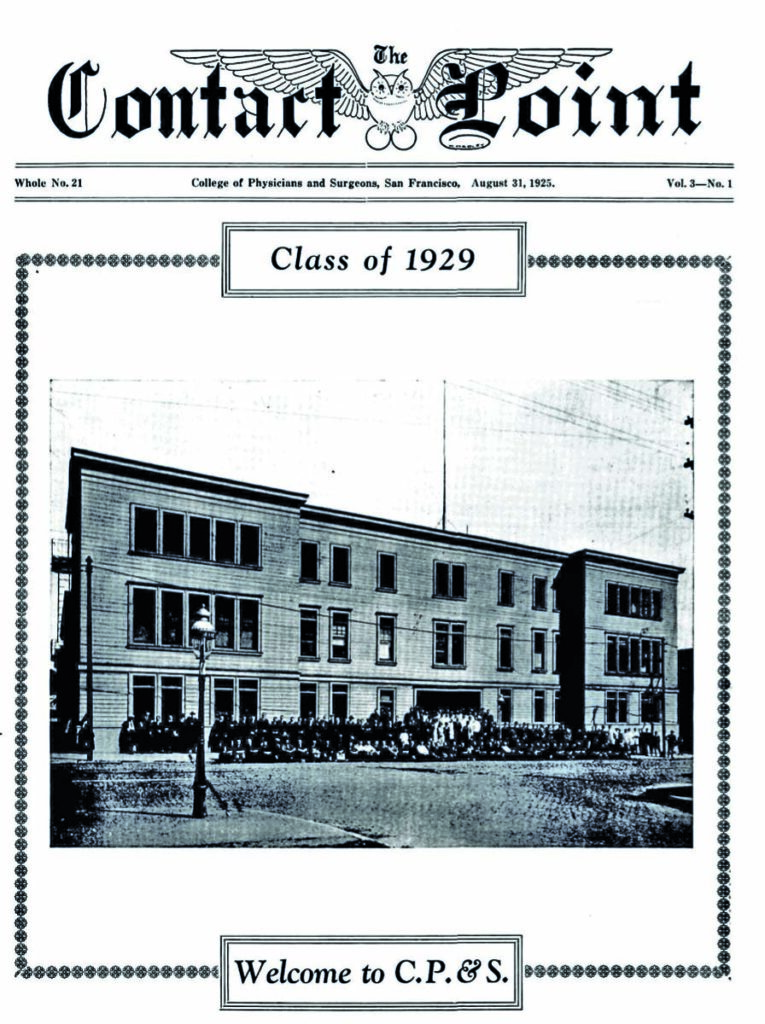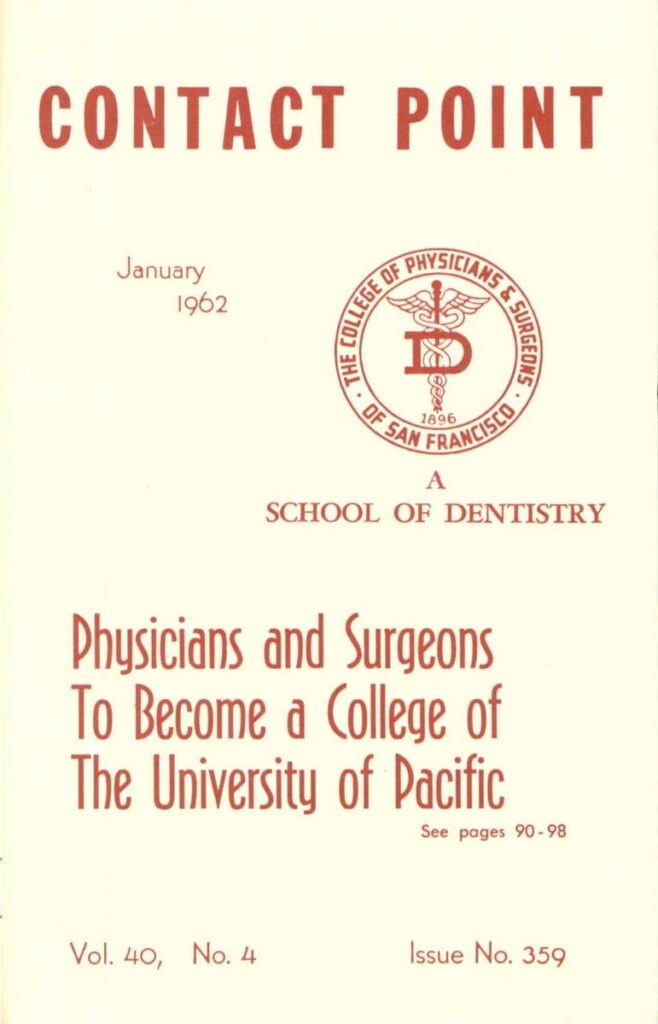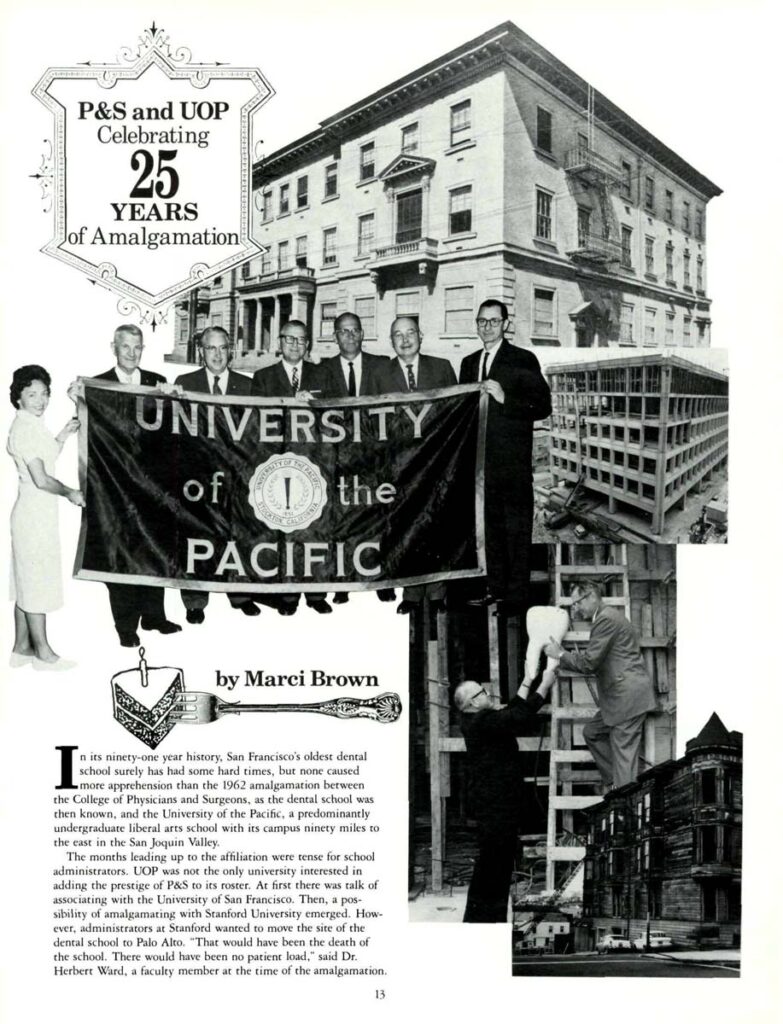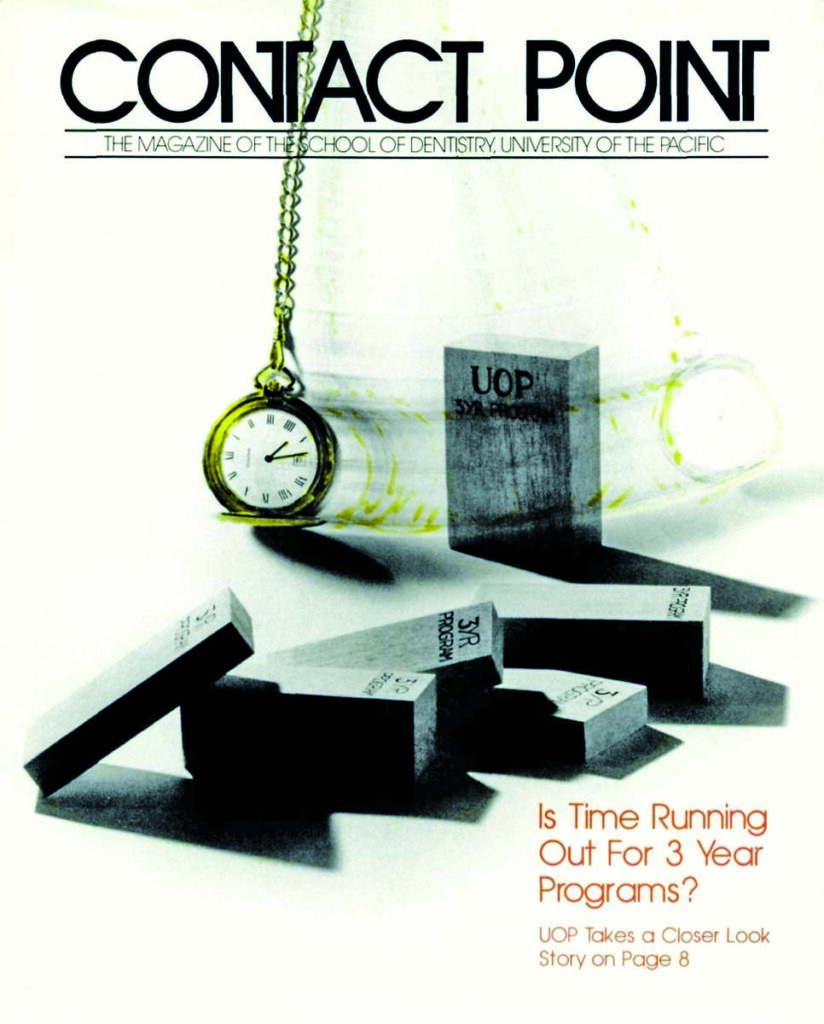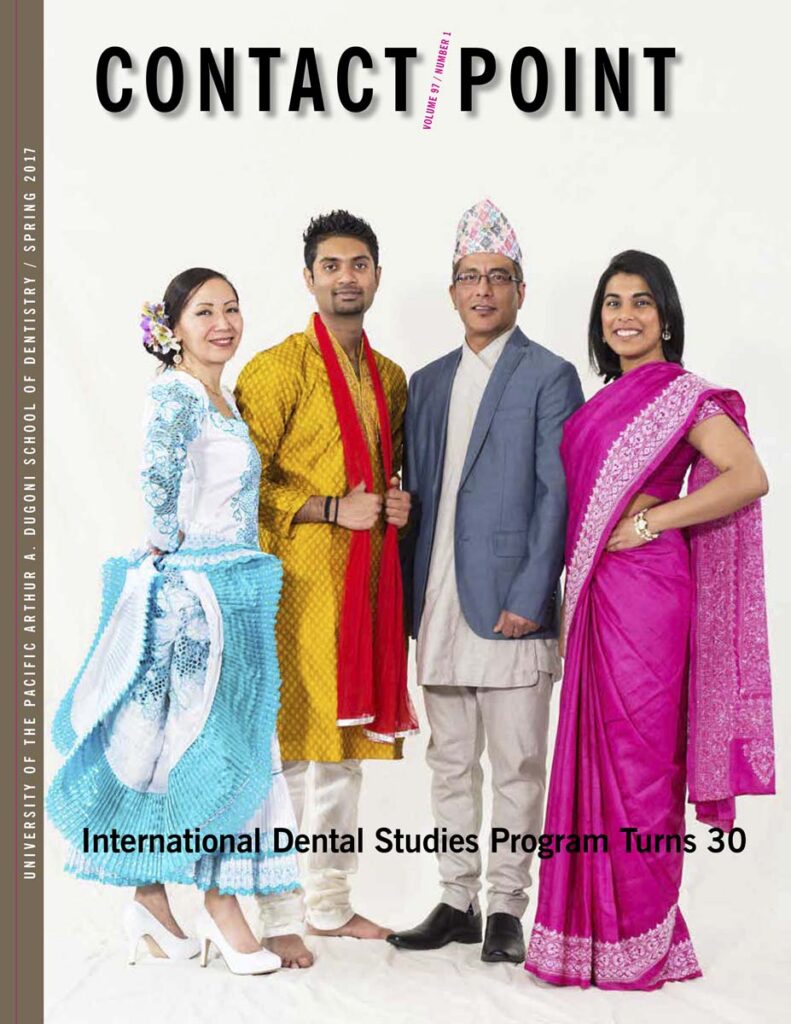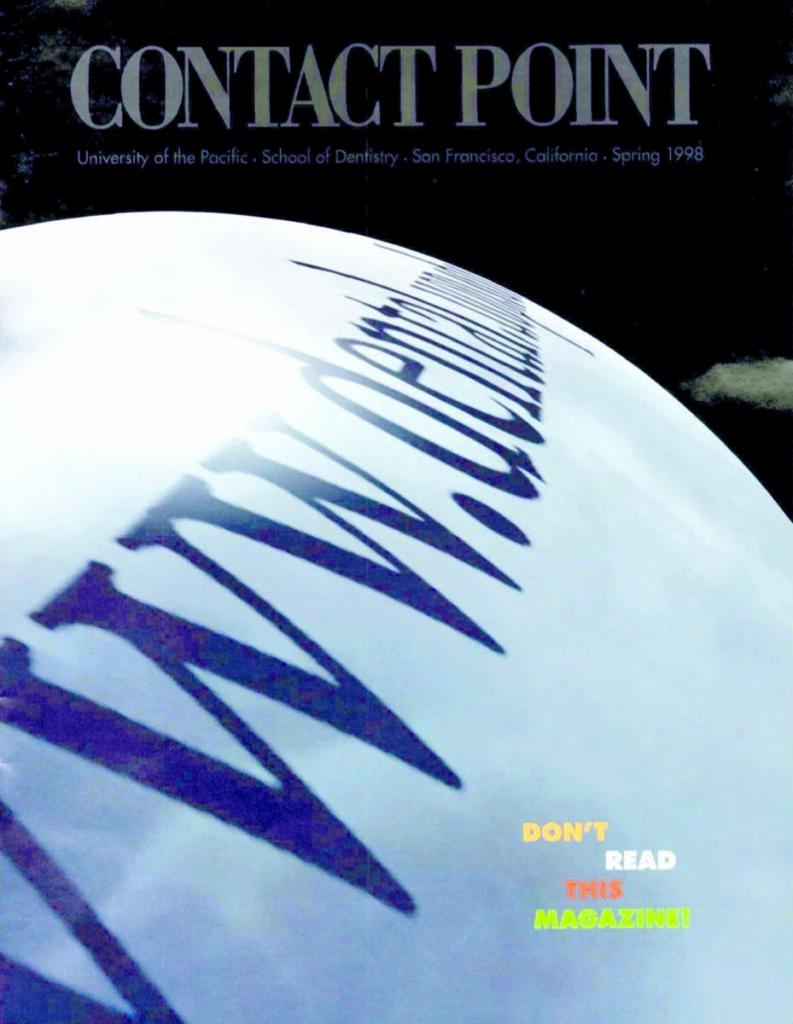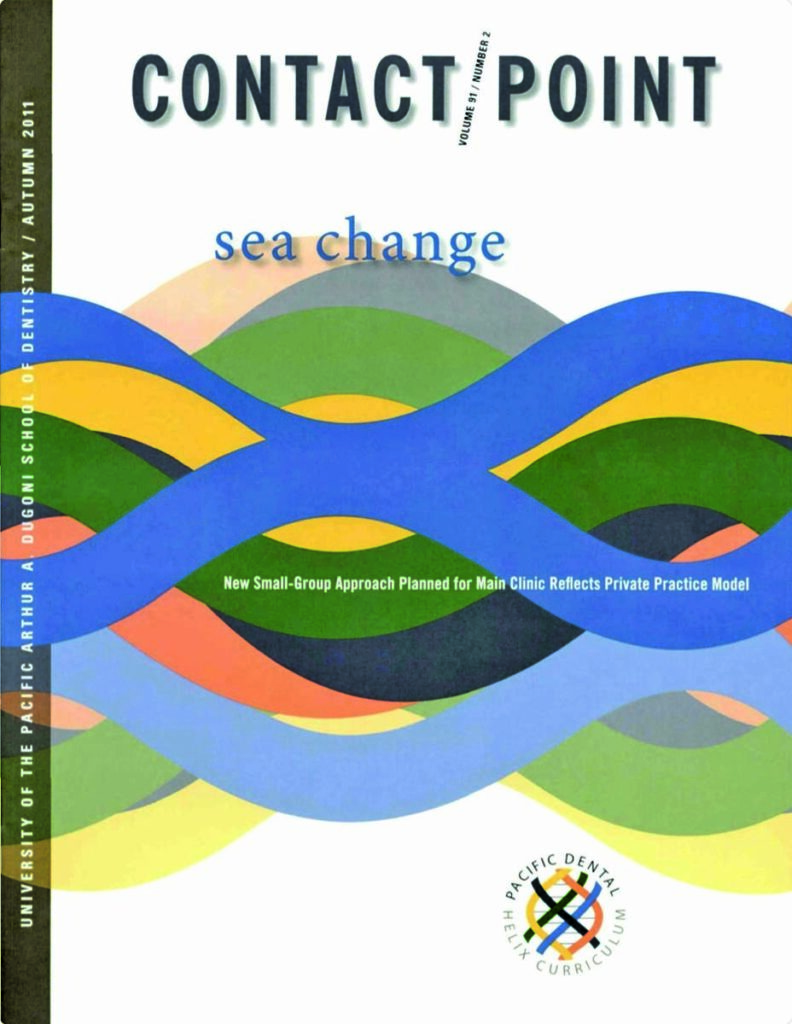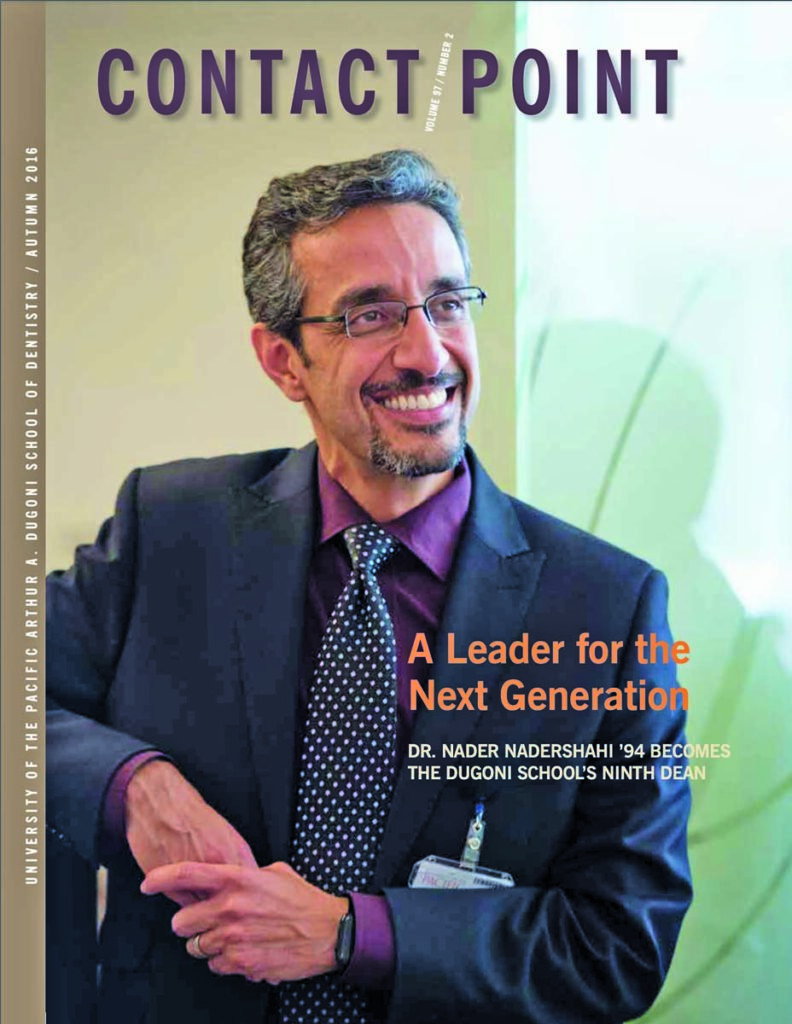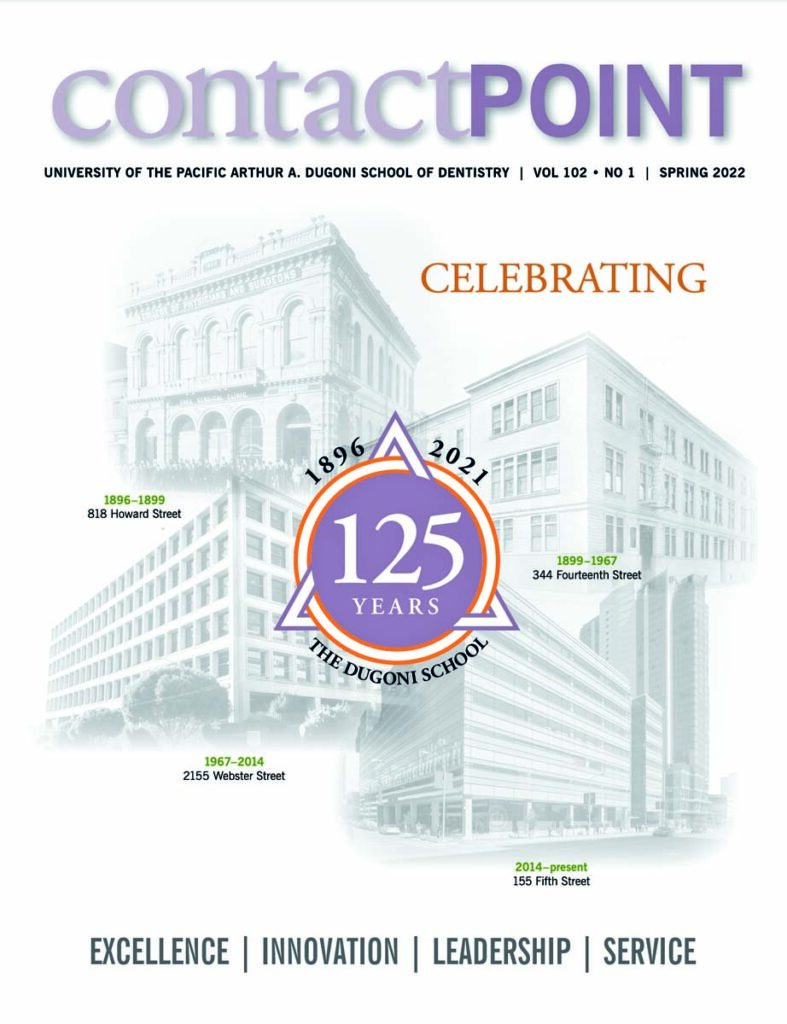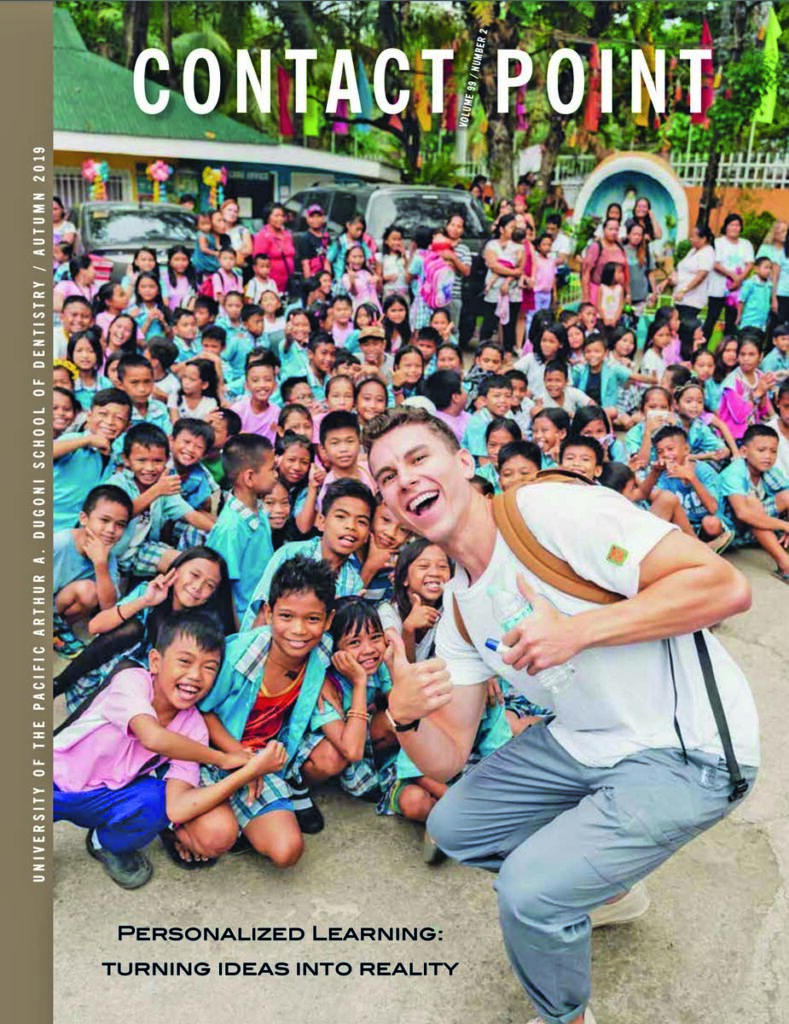by Dr. Eric K. Curtis
This year marks the centennial of Contact Point. Dr. Eric Curtis ’85, a long-time contributor to the magazine, explores Contact Point and its influence over the decades—from a student-led publication to an award-winning alumni magazine.

On February 27, 1924, the Associated Students of the College of Physicians and Surgeons of San Francisco distributed a bulletin. Student leaders, surely pleased with the name’s double meaning, called their dispatch The Contact Point.
Spindly typewriter script soon gave way to more sophisticated typesetting as Contact Point blossomed from newsletter to magazine. After about 50 years as a student publication, Contact Point became an administration-led effort. In seeking to disseminate updates, its editors, designers and contributors provided a window on the college’s development, attitudes, challenges and triumphs. It was, I wrote in a 1994 article celebrating the publication’s 70th anniversary, as if the school were keeping a diary.
Yet Contact Point amounts to more than a collection of observations, its contents more curated than diary entries, more nuanced than blog commentaries, more thoughtful than social media posts and more analytical than news. Its aim has always been to gather community. Even Contact Point’s early editors meant to attract alumni readers, to whom the paper pitched itself directly: “Classmates of old have a monthly reunion by subscribing to The Contact Point.”
For 100 years the magazine has undertaken to muster the school’s constituencies, to bind together its moving parts, reuniting them again and again as it chronicles the effects of evolving science, technology, delivery systems, social needs and patient demands.
Contact Point tracked the high-speed turbine handpiece, the university merger and move from Fourteenth Street to Webster Street and the three-year curriculum launch.
It described the arrival of the International Dental Studies program, Advanced Education in General Dentistry residency and the computerized preclinical simulation laboratory, as well as residencies in oral and maxillofacial surgery and endodontics, a three-year baccalaureate degree in dental hygiene and registered dental assistant in extended functions (RDAEF) and registered dental hygienist in alternative practice (RDHAP) CE certificate programs.
In 1996, Contact Point heralded the internet. In 1998, it invited readers to “just log on” to the school website.
In 2000, it explained 3-D imaging and Pacific’s pilot program with clear orthodontic aligners.
In 2004, Contact Point announced renaming the school to honor Dean Arthur A. Dugoni, and in 2012, it revealed plans for a new Fifth Street facility. In 2013, it asked readers, “Have you downloaded our app?”
Contact Point unveiled collaborations with Stanford and UCSF’s medical schools, USF’s nursing program and Pacific’s pharmacy school, as well as emerging non-dental Pacific San Francisco programs in audiology, music therapy, data analytics and food studies.
In 2019, it discussed personalized learning; 2020 featured an exposition on unconscious bias.
And three issues were produced remotely during the COVID-19 pandemic, all garnering awards from the International College of Dentists.
In my 34 years of Contact Point writing, I have covered topics as diverse as philanthropy, dental materials, local anesthetic, communications technology, clinical excellence, golf, stand-up comedy, the White Coat Ceremony, Matriculation Week and the accomplishments of Deans Dugoni, Ferrillo and Nadershahi.
Contact Point reinforces the humanism integral to the school’s curriculum and the sense of family essential to its raison d’être.
Offering points of reference, comparison, amusement, insight, hope and pride, it delivers perspectives that remind us of our origin story and help us reflect on our own professional and personal journeys. Emblem of both change and continuity, Contact Point identifies what’s new, what’s normal and what’s extraordinary.
Eric K. Curtis ’85, DDS, of Safford, Arizona, is a contributor to Contact Point and is the author of A Century of Smiles, a historical book covering the dental school’s first 100 years.
Read Dr. Eric Curtis’ Contact Point 70th anniversary article from 1994.
